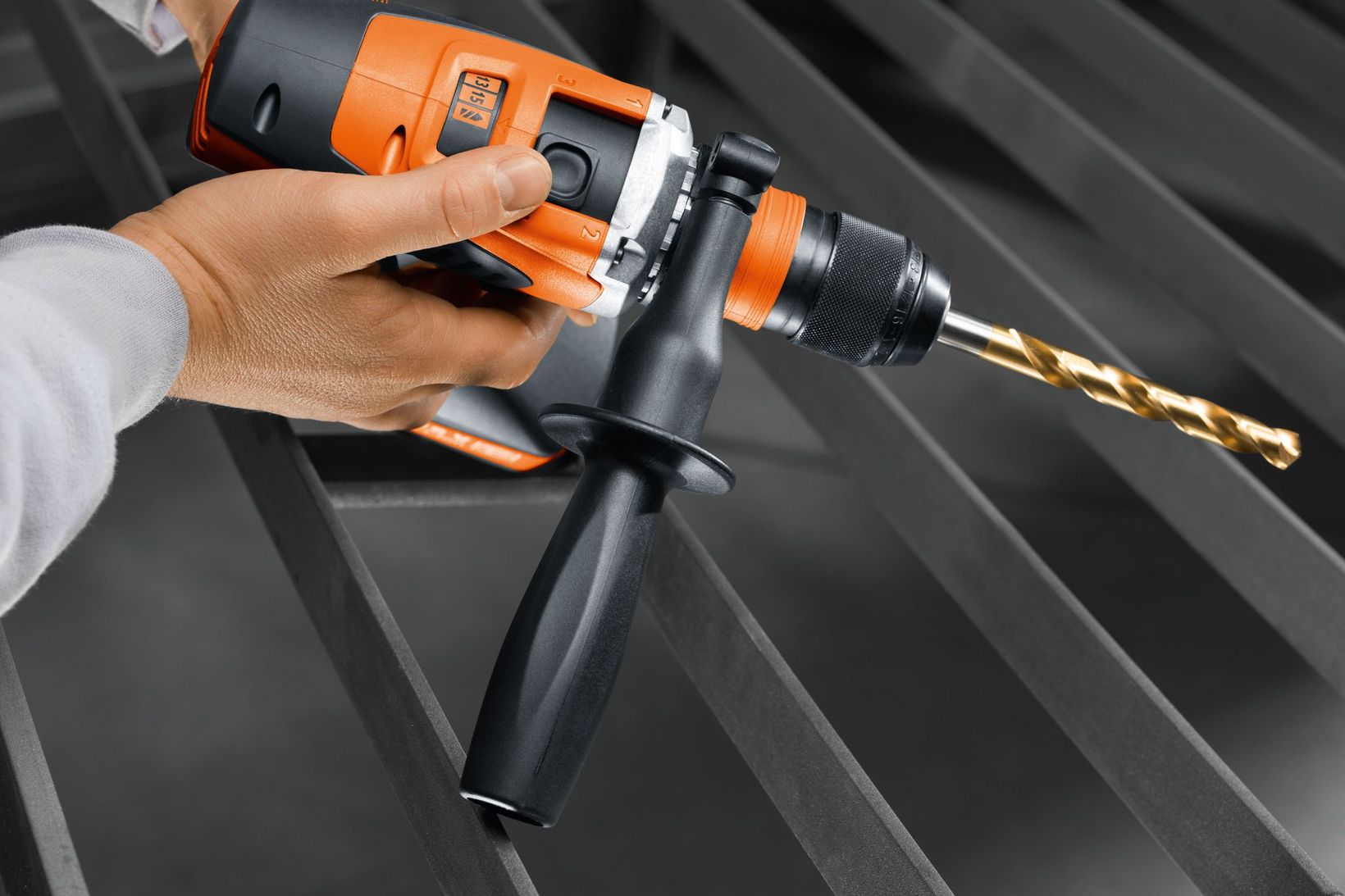This depends on the hardness of the drill and the strength of the metal and is usually stated by the drill manufacturer. If the cutting speed is known, metal processors calculate the corresponding number of revolutions or right tool speed for the relevant hole diameter. In principle, the harder the material, the lower the number of revolutions that should be selected.
4-speed cordless drill/driver for heavy-duty drilling work
Cordless drill/drivers are often used in place of pure drills when drilling in industry and manual trades. They have become increasingly powerful over the last few years. These cordless tools are now available in 4-speed variants with rotational speeds of up to 4000 rpm. The 4-speed ASCM cordless drill/drivers are the most powerful available from FEIN. They offer the right number of revolutions and therefore the perfect cutting speed for every drilling diameter.
First step: establish cutting speed
If the drill manufacturer does not state cutting speeds, FEIN makes the following recommendations for the most common drill types: Standard HSS drill bits are wear-resistant and work in construction steel at a cutting speed of up to 40 m/minute. Drill bits coated with titanium nitride (TiN) deliver less friction and are harder. At 50 m/minute, they have a considerably higher cutting speed and a longer service life. Carbide drill bits are more brittle and more breakable when subject to pressure. They are hand-guided with very tough metals, such as forged steel. They achieve cutting speeds of 70 m/minute in construction steel.

Second step: determine tool speed
FEIN recommends the right tool speed to suit the hole diameter and cutting speed. For example, a 4 mm hole can be drilled in the fourth speed at a rapid 3950 rpm and an 8 mm hole can still be drilled at 1950 rpm in the third speed. Compared with a 2-speed drill/driver, work is considerably faster and more precise.
